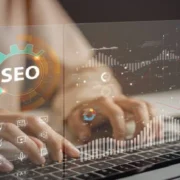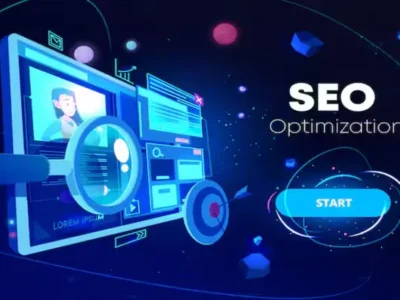The Rise Of AI In Marketing
Over the last decade, artificial intelligence has rapidly transitioned from experimental tech to an integral element of marketing operations for businesses everywhere. This leap has been driven by cloud computing, affordable storage, and the growing sophistication of AI algorithms capable of parsing immense datasets in real time. Today, AI empowers marketers to slacken the reins of uncertainty and, instead, confidently deploy campaigns supported by actionable insights, predictive analytics, and automation. The result? Marketing efforts have become data-driven, personalized, and outcome-focused, and this trend shows no signs of slowing. In digital advertising, for example, franchise Meta advertising experts lean on machine learning and intelligent data modeling to optimize campaign performance for reach and ROI.
Their work showcases how foundational AI-driven solutions enable advertisers to identify micro-segments, analyze granular user behaviors, and deliver relevant experiences more efficiently than ever. There’s compelling evidence that organizations embracing AI aren’t just reaping incremental returns—they’re leapfrogging over competitors. According to recent industry analysis, AI early adopters see higher customer acquisition rates, improved retention, and increased operational agility. As these tools grow easier to use, adoption will accelerate, with brands large and small leveraging their potential not as a luxury, but as a strategic imperative for remaining visible in an overcrowded digital world.
Optimizing Campaigns With AI-Powered Analytics
AI-powered analytics are the main tool for making marketing campaigns better. Today’s systems don’t just show you the top-line numbers. They also pull in data from email, social media, websites, and other sources to provide you a full-funnel perspective of performance. Machine learning models can find small connections between things like the time of day, the type of device, the style of the creative, or whether or not they affect user engagement or sales conversions. This useful information lets marketing teams make smart changes on the spot. Teams can automatically change their bidding strategy and fine-tune their targeting settings without having to wait for typical human reporting and analysis. For example, if a certain group of people starts to connect with a campaign more, AI will help move the budget toward that group to obtain the most conversions and cut down on wasted money.
Marketers typically say that AI analytics’ speed, accuracy, and flexibility can change their ROI. Reports that used to take days to put together, frequently by going through spreadsheets, may now be made in seconds, which allows for real-time testing and response. In my job as a consultant, I’ve seen teams lower campaign expenditures by a lot while still getting better outcomes. This is because AI-powered dashboards show both new opportunities and performance problems that manual analysis can’t keep up with.
Personalization and Enhanced Customer Experience
AI-powered personalization that talks to customers as people, not faceless groups, is quickly replacing the age of wide-ranging marketing. These days, people connect with brands on many different platforms by visiting websites, looking at products, asking questions, and interacting with brands—each action sending important signals. Combining these digital traces, AI learns about each customer’s likes, dislikes, goals, and stages of the trip so it can send them the right message at the right time. We cannot stress enough how important this mindset shift is.
Marketing professionals can use AI to do more than just use first names or simple cross-sells in emails. Deals and suggestions are now based on what a customer has bought, searched for, and what they are likely to need in the future. This makes experiences smooth and personalized. According to research from Gartner, customers believe, adhere to, and promote brands more when they are good at personalization. Personalizing content isn’t about pushing goods on people; it’s about building real, ongoing relationships with people, which turns casual browsers into loyal fans and passionate advocates.
Streamlining Content Creation and Management
One of the most significant headaches for digital marketers is the unending need for fresh, relevant content. Blogs, social updates, video scripts, newsletters, product descriptions—the list grows daily, and consumers expect up-to-the-minute relevance. AI tools address this challenge head-on, automating everything from topic ideation and keyword analysis to content drafting and distribution. Marketers harness algorithms that scour the web for trending stories, analyze competitor performance, and recommend content formats that resonate with each unique audience.
What’s especially game-changing is how these tools help scale content production without sacrificing quality. Copywriting platforms can draft first versions in seconds, suggest compelling headlines, check for on-brand tone, and even embed SEO best practices automatically. AI has become a reliable collaborator, freeing creative specialists to focus on strategy and storytelling rather than the minutiae of drafting or optimizing routine communications. Furthermore, AI-driven A/B testing enables marketers to fine-tune messaging based on live audience feedback, continuously elevating performance as they experiment with headline structures, calls-to-action, or visual assets in real time.
Adopting Generative AI: Creative Possibilities
Generative AI opens up unique options that no one could have thought of ten years ago. These high-tech models can quickly make high-quality text, make images that are unique and fit the look of a brand, or edit audio and video clips for specific campaign segments. Marketers can quickly make prototypes of campaign ideas and change them to fit specific buyer personas, demographics, or seasonal trends.
How Generative AI Enhances Creative Workflow:
- Drafting multiple copies and design variations for split-testing or targeting micro-segments
- Generating custom illustrations and infographics to support content marketing efforts
- Adapting campaign creatives to real-time user behavior and shifting market dynamics
This new toolkit allows creative professionals to iterate and experiment at a previously impossible rate. Rather than replacing creative teams, generative AI amplifies their capabilities, delivering a steady stream of inspiration and allowing human insight to guide the final narrative.
Potential Challenges and Responsible Use
While AI’s benefits are clear, the technology brings essential considerations that shouldn’t be ignored. AI-driven marketing runs on mountains of data, prompting concerns about privacy, consent, and compliance with global regulations such as GDPR and CCPA. Teams using these technologies must establish robust data governance protocols and prioritize responsible, ethical use at every stage.
If automation goes unchecked, organizations face additional hurdles, such as algorithmic bias and the persistent risk of depersonalized interactions. To mitigate these, continuous audits and manual review processes should become standard operating procedures. It’s about striking a thoughtful balance: letting automation do the heavy lifting while ensuring human oversight defines the brand’s voice, values, and creative direction.
With transparent use, ongoing education, and accountability, marketers can build sustainable, trust-driven relationships with their customers, transforming AI from a technology of convenience to a driver of long-term business value.
Real-World Marketing Examples Using AI Tools
Across the digital landscape, marketers are using AI in increasingly innovative ways. E-commerce brands leverage intelligent recommendation engines to serve personalized products, boosting average order values and customer satisfaction with each click. SaaS providers deploy chatbots and virtual assistants to handle onboarding, troubleshoot issues, and provide tailored support around the clock, streamlining operations while improving user experience.
- Retail giants adjust promotional offers and stock based on predictive analytics tied to customer behavior and inventory turnover..
- Financial service providers use AI to detect fraud patterns and enhance customer security, building trust and accelerating adoption.
- Dynamic content strategies in entertainment and media companies keep users engaged longer with automated playlists and content suggestions.
Even multi-location franchises use AI to scan performance across branches, pinpoint areas for improvement, and deliver localized ad strategies with pinpoint accuracy. The opportunities grow daily, demonstrating why staying ahead of the AI adoption curve is increasingly required for operational success, regardless of the vertical.
Looking Ahead: Future Trends in AI-Driven Marketing
The future of marketing that is powered by AI is very bright. As platforms and consumer technologies improve, we can look forward to more accurate predictive lead scoring, better voice and picture search optimization, and the seamless merging of online and offline experiences. “Hyper-personalization” could soon be the norm thanks to AR and VR shopping that is driven by AI suggestions. To stay competitive, marketers need to always be trying new things and getting better at what they do.
People who are quick to adopt automation, creative content, and advanced analytics will be in the best position to take advantage of the next wave of marketing innovations. As AI becomes more open to everyone, smaller brands will have access to world-class marketing technology like never before. This will boost creativity, efficiency, and customer focus on a huge scale. In the end, tools that are powered by AI will make every part of digital marketing better. People who move carefully, learn quickly, and find the right mix between automation and personal interaction will be the ones who lead the way to a more dynamic, customer-focused future.
International Digital Marketing: Navigating the Global Marketplace










Comments